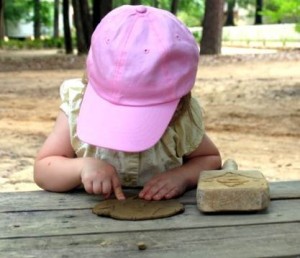When a five year old was asked about her most memorable preschool activities, without pause she indicated it was the crafts and play stations. When asked why, she said it was fun to get dirty, to create, to use glitter and glue and play in sand and water, to try new things and to make something special for her parents.
Preschool activities clearly focus on crafts as a major component of their daily curriculum – crafts are used to entertain, to emphasize individuality and to help children explore through sensory play. The focus on sensory play has become integral in the development of preschool activities. Effective learning opportunities for preschoolers focus on learning through their five senses. They explore their world through activities that ignite learning through the senses of touch, sight, smell, taste and hearing. For toddlers and preschoolers, everything is new and must be experienced for the first time to create points of reference for future experiences. How sand feels between the toes for an adult will encourage memories of happy days on the beach; a child’s first exposures to the same sensations will create a context for which the preschooler can continue to learn and experience. Parents and educators are responsible for providing the opportunities to engage children’s use of their five senses. These sensory situations will play a vital role in the growth and development of a child. Sensory play is also a great way to foster fine motor development and hand-eye coordination – using scissors to cut play dough or stencils to shape sand, or a tube to collect and count beans will help fine tune the development required to do such tasks as basic handwriting.

And off course the best way for a child to explore their world and to engage their senses is through both structured and unstructured play. Sensory play is being incorporated into preschool activities throughout North America? Preschools create play stations in an attempt to engage children. Sensory play can be messy and this should be explored as an acceptable outcome to play. Sensory play is directly linked to building language, social and creativity; as children work together, share the space and tools, create stories and communicate their needs, desires and express their imaginations, they are finding their places within the context of their current worlds. They are learning to understand their roles within the group, to understand their responsibility and accountability to the group and to themselves.
Boundaries can also be defined within these play settings, helping children understand their personal boundaries and the concept of self-monitoring. One of the most obvious benefits of unstructured sensory play as a general practice of preschool activities is the evolution of creative expression. Children are invited to explore the materials and environments they are introduced to. From a teaching perspective, these preschool activities provide unimagined opportunities for hands on teaching and exploration of all concepts from the natural environment to building, to color and texture mixing, to team work and personal accountability.
It is important that educators continue to offer significant opportunities for sensory play for all young learners – from baby to toddler to preschooler and onwards up the journey of learning. There is a sense of solace and accomplishment for all who experience sensory play and preschool activities play a part in this.
Leave a Reply